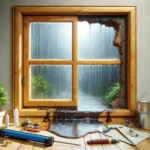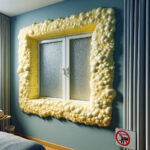As of March 18, 2013, all buildings of 5 storeys (above ground) must undergo periodic verification and maintenance in order not to compromise safety and avoid any development of hazardous conditions. (Seethe law)
The inspection/verification must be carried out exclusively by an engineer or architect and must be dated, documented and kept in a free register at the consultation.
This is the famous law on the inspection of facades and parking called Law 122

 Because some types of construction are potentially more prone than others to the deterioration of the so-called building envelope.
Simple buildings (square or rectangular perimeter) of bricks, stones or aluminum decline, with sloping roof are among the most resistant buildings.
On the other hand, irregularly shaped buildings with two or three different sidings, including acrylic with flat roofs, are among the most fragile buildings.
Some architectural details favour situations that are potentially conducive to water infiltration, such as solins with negative slopes (towards the interior of the building)
Because some types of construction are potentially more prone than others to the deterioration of the so-called building envelope.
Simple buildings (square or rectangular perimeter) of bricks, stones or aluminum decline, with sloping roof are among the most resistant buildings.
On the other hand, irregularly shaped buildings with two or three different sidings, including acrylic with flat roofs, are among the most fragile buildings.
Some architectural details favour situations that are potentially conducive to water infiltration, such as solins with negative slopes (towards the interior of the building)

Mandatory inspection deadlines are set:
- Over 45 years: March 18, 2015.
- 25 to 45 years: March 18, 2016.
- 15 to 25 years: March 18, 2017 and
- 10 to 15 years: March 18, 2018.
Building engineers, house inspectors and architects.
Structural engineers,or architects will tend to recommend a complete repair of caulking every 10 years. Yet sealants are made for 30 to 40 years! So what explains these frequent findings in inspection reports? Although the law applies to buildings of 5 storeys or more (COMMERCIAL area including condominium towers), construction professionals believe that all homeowners should feel concerned about these regular inspections regardless of their floor number and height.Construction types more fragile than others
 Because some types of construction are potentially more prone than others to the deterioration of the so-called building envelope.
Simple buildings (square or rectangular perimeter) of bricks, stones or aluminum decline, with sloping roof are among the most resistant buildings.
On the other hand, irregularly shaped buildings with two or three different sidings, including acrylic with flat roofs, are among the most fragile buildings.
Some architectural details favour situations that are potentially conducive to water infiltration, such as solins with negative slopes (towards the interior of the building)
Because some types of construction are potentially more prone than others to the deterioration of the so-called building envelope.
Simple buildings (square or rectangular perimeter) of bricks, stones or aluminum decline, with sloping roof are among the most resistant buildings.
On the other hand, irregularly shaped buildings with two or three different sidings, including acrylic with flat roofs, are among the most fragile buildings.
Some architectural details favour situations that are potentially conducive to water infiltration, such as solins with negative slopes (towards the interior of the building)



